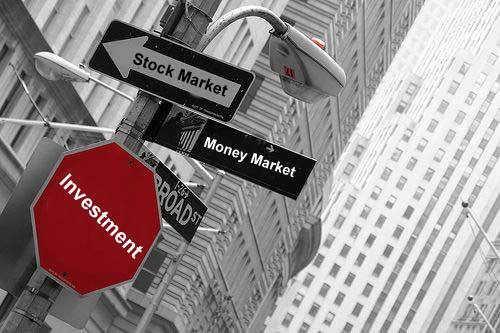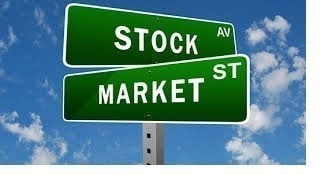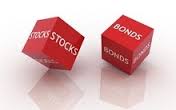An investor has always confusion regarding where to investment in Stock market or Money market
There are two types of financial market’s viz. the money market and the capital market. The money market in that part of a financial market which deals in the borrowing and lending of short term loans, generally for a period of less than or equal to 365 days. It is a mechanism to clear short term monetary transactions in an economy.
 what is stock market?
what is stock market?
Most of the reader or investor must be very well known with the term “stock market” and so we’re not discussing much of it and so just sharing a small introduction.
The market in which shares are issued and traded, either through exchanges or over-the-counter markets. Also known as the equity market, it is one of the most vital areas of a market economy, as it provides companies with access to capital and investors with a slice of ownership in the company and the potential for gains based on the company’s future performance.
what is money market?
The most of the investor is not aware of this market and fact regarding the same. you as a investor think are you aware of what is money market it advantages or more basic thing which instruments can be included in this category today in this article i am going to share very basic thing of money market even we will compare the both financial market.
A segment of the financial market in which financial instruments with high liquidity and very short maturities are traded. The money market is used by participants as a means for borrowing and lending in the short term, from several days to just under a year.
Instrument of money market
This is a very short list of money market just to make you aware
- Money Market Instruments
- Treasury Bills (T-Bills)
- Commercial Papers (CPs)
- Repurchase Agreements (Repo)
- Banker’s Acceptance
Advantages of money market instrument
Asset Preservation
In spite of the relatively low returns, the money market can be a great way for investors to preserve, and even make, a bit of money
Liquidity
The biggest advantage and the most attractive feature of the money market is liquidity.
Risks
There are risks in every investment, but the money market is probably one of the safest places for your capital. After all, the funds are invested in relatively secure government or other short-term, high-quality debt.
Yield
Money market funds pay a yield based on the holdings of the underlying fund. The yield is generally automatically reinvested into the fund via purchase of additional shares in the fund. This yield makes money market funds an attractive alternative to the mattress.
Comparison of money market and stock market
Capital markets are perhaps the most widely followed markets. Both the stock and bond markets are closely followed, and their daily movements are analyzed as proxies for the general economic condition of the world markets. As a result,
the institutions operating in capital markets – stock exchanges, commercial banks and all types of corporations, including nonbank institutions such as insurance companies and mortgage banks – are carefully scrutinized.
1. Maturity Period:
The money market deals in the lending and borrowing of short-term finance (i.e., for one year or less), while the capital market deals in the lending and borrowing of long-term finance (i.e., for more than one year).
2. Credit Instruments:
The main credit instruments of the money market are call money, collateral loans, acceptances, bills of exchange. On the other hand, the main instruments used in the capital market are stocks, shares, debentures, bonds, securities of the government.
3. Nature of Credit Instruments:
The credit instruments dealt with in the capital market are more heterogeneous than those in the money market. Some homogeneity of credit instruments is needed for the operation of financial markets. Too much diversity creates problems for the investors.
4. Institutions:
Important institutions operating in the’money market are central banks, commercial banks, acceptance houses, nonbank financial institutions, bill brokers, etc. Important institutions of the capital market are stock exchanges, commercial banks and nonbank institutions, such as insurance companies, mortgage banks, building societies, etc.
5. Purpose of Loan:
The money market meets the short-term credit needs of business; it provides working capital to the industrialists. The capital market, on the other hand, caters the long-term credit needs of the industrialists and provides fixed capital to buy land, machinery, etc.
6. Risk:
The degree of risk is small in the money market. The risk is much greater in capital market. The maturity of one year or less gives little time for a default to occur, so the risk is minimized. Risk varies both in degree and nature throughout the capital market.
7. Basic Role:
The basic role of money market is that of liquidity adjustment. The basic role of capital market is that of putting capital to work, preferably to long-term, secure and productive employment.
8. Relation with Central Bank:
The money market is closely and directly linked with central bank of the country. The capital market feels central bank’s influence, but mainly indirectly and through the money market.
Get free important share market ideas on stocks & nifty tips chart setups, analysis for the upcoming session, and more by joining the below link: Stock Tips
Have you any questions/feedback about this article? Please leave your queries in the comment box for answers.





good